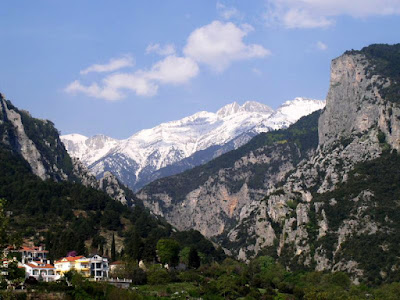We examine the possibility to employ neutrinos to communicate within the galaxy. We discuss various issues associated with transmission and reception, and suggest that the resonant neutrino energy near 6.3 PeV may be most appropriate. In one scheme we propose to make Z^o particles in an overtaking e^+ - e^- collider such that the resulting decay neutrinos are near the W^- resonance on electrons in the laboratory. Information is encoded via time structure of the beam. In another scheme we propose to use a 30 PeV pion accelerator to create neutrino or anti-neutrino beams. The latter encodes information via the particle/anti-particle content of the beam, as well as timing. Moreover, the latter beam requires far less power, and can be accomplished with presently foreseeable technology. Such signals from an advanced civilization, should they exist, will be eminently detectable in neutrino detectors now under construction.
I though I'd better fill in the spots about leaving comments in places, and not showing the significance of what I am pointing to by insinuation alone.
However, Kapusta also notes that a sufficiently advanced civilization might use pulses of neutrino superfluid for long-distance communications.See:Cern Courier:The right spin for a neutrino superfluid
This of course requires that we look at what Joe Kapusta is actually doing at Cern. A comment that is "slight of hand," that shows what I am pointing too, is at the forefront of what is to come out of Cern at startup, along with the benefits of the Muon detection.
Well you had to know, left to my own devices, the ability to pick out the information that is setting the course for humanities future, is of course great interest to me. What descending people may see of this blog, or the "tightening of the circle" against the influences from here, is of course a close mindedness that always comes at a cost. The abilities I may harbour in other areas are less of a concern to me, knowing that what I am sharing is always the work at the edges of the periphery of our vision.
Vernon Barger: perspectives on neutrino physics Posted by dorigo
Barger then mentioned the idea of mapping the universe with neutrinos: the idea is that active galactic nuclei (AGN) produce hadronic interactions with pions decaying to neutrinos, and there is a whole range of experiments looking at this. You could study the neutrinos coming from AGN and their flavor composition.
So you look at the universe in "different ways" and never before had you thought to think that the constrains that are applied to self, is the limitation we settle our own points of view too. These are the "resounding factors" that work "like a Higgs" as these things gather around it. Life gathers around that "point of view." You've set the tone. Brain Cox on Ted.com, gives a nice example of Margaret Thatcher moving across the room.
I do not know how many times I can use the word like "tone" and not have found some relevance to the psychology of the individual, and then, see it's relation out there in terms of the Lagrangian. HelioSeismology's(see sidebar and click on sun, or, other abstract picture) and how it that we can predict such events within the very sun itself and by use of SOHO. This gives us an advantage and a warning system in place in relation to sunspot activity.
Ruffles in the Field
So easy then to speak on the significance of the emotive struggle, and then not to find a relation to the space around us. The context of gathering thoughts and things, as they are defined as some graviton gathering in a bulk perspective of space?
Why I glamour to the cause of those who hurt the attempts to see the world in different ways, and leave people to prognosticate to their own devices and to the call of, "let there be dragons." Gathered around then to the limitations of the thinking mind, set by others. We want people to push these boundaries, not be limited by them.
This picture is a copy of a "16 century woodcut" copied by Camille Flammarion in 1888.
The Flammarion woodcut. Flammarion's caption translates to "A medieval missionary tells that he has found the point where heaven and Earth meet..."
The widely circulated woodcut of a man poking his head through the firmament of a flat Earth to view the mechanics of the spheres, executed in the style of the 16th century cannot be traced to an earlier source than Camille Flammarion's L'Atmosphère: Météorologie Populaire (Paris, 1888, p. 163) [38]. The woodcut illustrates the statement in the text that a medieval missionary claimed that "he reached the horizon where the Earth and the heavens met", an anecdote that may be traced back to Voltaire, but not to any known medieval source. In its original form, the woodcut included a decorative border that places it in the 19th century; in later publications, some claiming that the woodcut did, in fact, date to the 16th century, the border was removed. Flammarion, according to anecdotal evidence, had commissioned the woodcut himself. In any case, no source of the image earlier than Flammarion's book is known.See here for larger version "with caption" that has been translated above.
Pushing back the veil of our boundaries of thought are always of interest to me and the woodcut while speculated upon is my way of expressing this attempt.
See:











